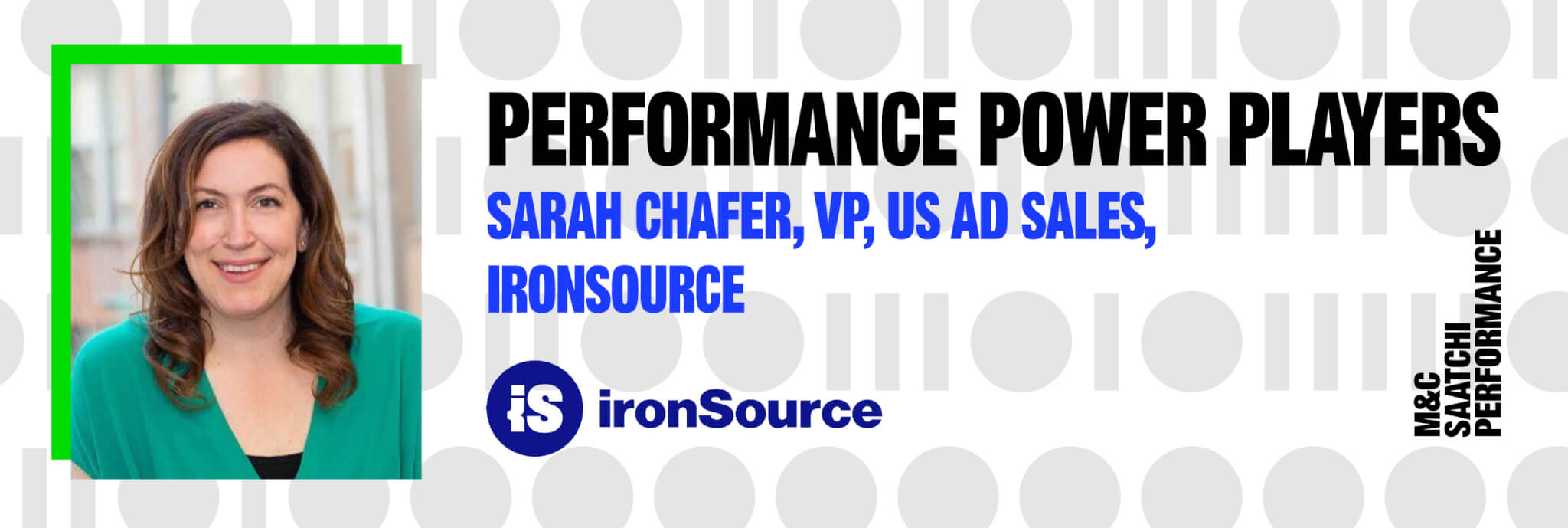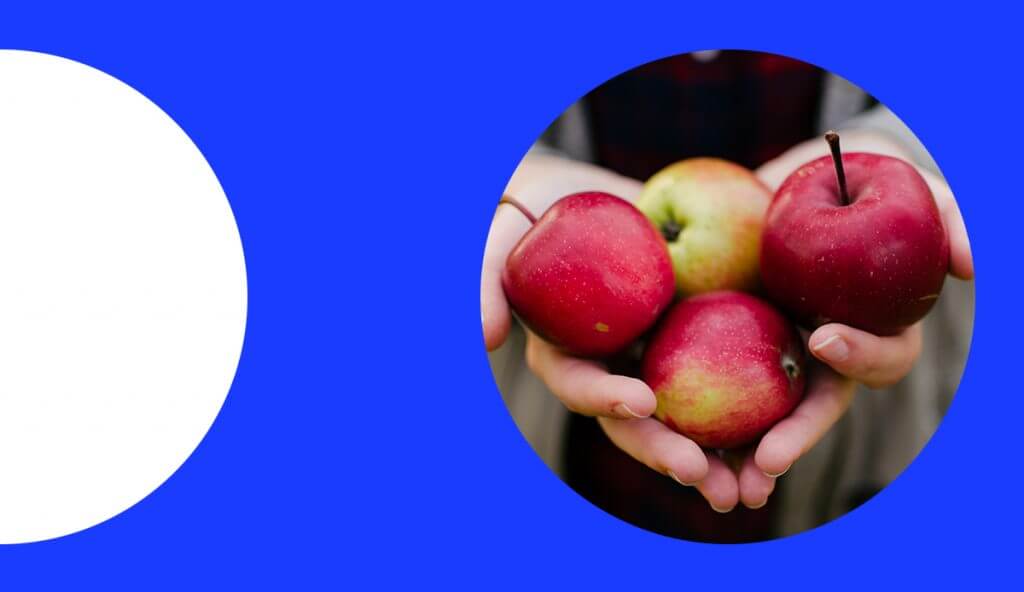Performance Power Players: Sarah Chafer, ironSource


As ironSource’s Vice President of US Ad Sales, Sarah Chafer knows user acquisition on mobile devices better than most. A veteran of the mobile advertising company Tapjoy, acquired by ironSource in 2021, Sarah also has specialized knowledge of rewarded advertising. We sat down with her to learn the differences between Android and iOS User Acquisition and which rewarded tactics work best for app marketers across the spectrum.
Key takeaways:
- The differences between User Acquisition on Mobile devices go beyond privacy policies on Android and iOS. App marketers should also consider device sizes, cost fluctuations, and audience variations.
- App marketers should identify a return on ad spend (ROAS) threshold to make the most of rewarded campaigns. Android campaigns can target deep in-app engagements, while iOS campaigns can target actions on mobile web.
- ‘Brand-formance’ is taking the marketing world by storm. App marketers, DTCs, and brands alike are adopting a performance mindset and making ROAS a top KPI.
Today’s app marketers are keenly aware of the impact of Apple’s privacy policies, but the differences between iOS and Android go even deeper. Tell us more…
On the iOS side, there are certainly some recent developments related to privacy — but mobile has always been an ever-changing environment. Still, it can be tough to gain the technical understanding to make key decisions. Like how should you optimize in a SKAN environment? Should you utilize a mobile measurement partner, or not, in a given situation? Marketers just need to stay on their toes for any changes that arise.
Another major difference in User Acquisition on Mobile Devices between iOS and Android marketing is device sizes. On iOS, you may be optimizing for different screen resolutions, but the pixel ratios are consistent across devices. But on Android, there are hundreds of different devices, screen sizes, navigation setups, and even different app stores to account for. So you might have to get a lot more granular when it comes to campaign setup and creative optimization.
It’s also crucial to understand variations between Android and iOS audiences. In different geos, you might find there’s a heavier saturation of Android versus iOS users. Certain users may also be more or less inclined to engage with certain brands or ad types. It’s essential to understand who you can access on each platform and what targeting options are available.
Lastly, app marketers should consider how campaign costs will vary between iOS and Android. iOS can sometimes be a bit more expensive because accessibility has been limited by changes in privacy policies. But in light of that, we’ve also seen a bit of a “flight to Android” among marketers, which has made the platform more competitive. So it’s always fluctuating, but you should take the temperature of the current marketing ecosystem when allocating campaign budgets.
How can app-marketers utilize the rewarded advertising model through in-app offerwalls?
Rewarded advertising is all about connecting with a user who’s very engaged in the advertising process — it’s co-creative. App-based businesses see direct returns from investing in that value exchange model. But executing rewarded advertising well requires a lot of expertise around key points of app adoption. Like, what do our prospective users really want, and how can we foster an emotional connection? Rewarded advertising essentially sponsors their play, so brands become organically associated with the fun they’re having.
App marketers, and even traditional brands, are finding a lot of value in performance video. The majority of brands are already creating video for use across social media — it’s easy to add more value for users by leveraging those assets in a gaming environment.
Another draw for rewarded ads is that they are entirely performance-based. This allows advertisers to tie ad spend directly to revenue and other events, and testing keeps that growth consistent. That test-and-learn mindset can be applied to the entire rewarded experience. You can A/B test images, video lengths, offer headlines, or even different offer instruction copy. The instruction copy is really an under-sung hero when it comes to rewarded. Making the terms of the value exchange transparent and compelling draws the user into the experience.
Even brands are recognizing the value of performance lately; I’ve even heard the term brand-formance’ crop up. In the rewarded world, a beauty retailer could set up a campaign that literally incentivizes a first purchase, for example. Even if the target action is just getting a free sample, it’s a terrific supplement to the other channels.
How do iOS and Android user acquisition strategies differ with respect to rewarded advertising?
The biggest difference is that rewarded ad engagements can happen entirely in-app on Android. Meanwhile, on iOS, advertisers will direct users to mobile web for the next action. The discrepancies in these two user flows have, over time, led to the emergence of discrete ad products in the rewarded ecosystem. For instance, Tapjoy has invested in a Multi-Reward Cost Per Engagement (CPE) ad unit for Android UA. App marketers use Multi-Reward CPE to engage prospective users deeper into the funnel by offering rewards for sequential target actions. For example, a gaming ad might ask a user to install the app, create an avatar, then surpass level three. At each stage, the user would receive a small reward of virtual currency in the host app. Because iOS app marketers build user flows on mobile web, the target action is often something like signing up for a subscription. Soon we’ll also have the option of Multi-Reward Cost Per Action flows for mobile web campaigns.
User acquisition strategies can look very different for mobile games compared to other app-based businesses. What rewarded advertising tactics are valuable for each?
You always want to start by identifying the most valuable next action a user could take. Obviously, UA managers are interested in growing user volume, but most apps have also identified a threshold at which a new user becomes “sticky.” For example, in most games, development teams might see that users are likely to become regular players after passing a certain level. UA managers can then take that information and set up a rewarded campaign that incentivizes users to engage up to or beyond that threshold. As an industry, gaming is very performance-driven, so ROAS is always top-of-mind for game marketers. Non-gaming apps will also have engagement thresholds associated with ROAS and predicted LTV, but it might look a bit different. A rideshare app may encourage users to take a first ride, for example.
App marketers’ ability to target these key actions will also be dictated by the platform they are using. Taking that example of the rideshare app, again — the campaign would need to target an action on mobile web, so a first ride might not be ideal. But they could invite a user to enter their email to receive a coupon for a free first ride. The user would get rewarded after submitting, so the ride itself isn’t guaranteed, but it’s still pushing them down the funnel and measurable with a coupon code.
Do you have any predictions for the future of user acquisition or mobile advertising in general?
Industry-wise, I think we’ll continue to see a shift towards that performance mindset. App marketers and brands alike will be thinking even more about engagement and finding new ways to measure deep funnel actions. Campaigns will focus on lifetime value and leverage more creative models.
On the UA side, we believe that privacy will continue to be an area of focus. But we’re already getting more sophisticated and experienced. People are getting more educated and approaching campaigns differently, but putting the user first can only be a good thing in the long run.
Thanks for chatting with us, Sarah!
About Sarah Chafer:
Sarah Chafer is the Vice President of US Ad Sales at ironSource where she is responsible for performance and brand sales revenue growth and product adoption. A veteran of the mobile advertising company Tapjoy, acquired by ironSource in 2021, she has been with the company since 2009 and saw them through the transition from web-based advertising to mobile in 2010. Prior to joining ironSource and Tapjoy, Sarah was a Media Director at Medley Inc., a global digital agency responsible for dating brands. There she was responsible for the user acquisition and affiliate sales team.
Interested in becoming a Performance Power Player, contact us if you would like to be considered as a contributor to our blog

